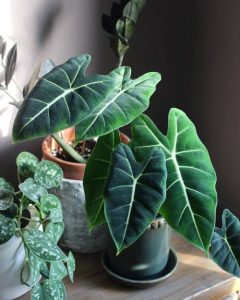- English
- Chinese
- French
- German
- Portuguese
- Spanish
- Russian
- Japanese
- Korean
- Arabic
- Irish
- Greek
- Turkish
- Italian
- Danish
- Romanian
- Indonesian
- Czech
- Afrikaans
- Swedish
- Polish
- Basque
- Catalan
- Esperanto
- Hindi
- Lao
- Albanian
- Amharic
- Armenian
- Azerbaijani
- Belarusian
- Bengali
- Bosnian
- Bulgarian
- Cebuano
- Chichewa
- Corsican
- Croatian
- Dutch
- Estonian
- Filipino
- Finnish
- Frisian
- Galician
- Georgian
- Gujarati
- Haitian
- Hausa
- Hawaiian
- Hebrew
- Hmong
- Hungarian
- Icelandic
- Igbo
- Javanese
- Kannada
- Kazakh
- Khmer
- Kurdish
- Kyrgyz
- Latin
- Latvian
- Lithuanian
- Luxembou..
- Macedonian
- Malagasy
- Malay
- Malayalam
- Maltese
- Maori
- Marathi
- Mongolian
- Burmese
- Nepali
- Norwegian
- Pashto
- Persian
- Punjabi
- Serbian
- Sesotho
- Sinhala
- Slovak
- Slovenian
- Somali
- Samoan
- Scots Gaelic
- Shona
- Sindhi
- Sundanese
- Swahili
- Tajik
- Tamil
- Telugu
- Thai
- Ukrainian
- Urdu
- Uzbek
- Vietnamese
- Welsh
- Xhosa
- Yiddish
- Yoruba
- Zulu
- Kinyarwanda
- Tatar
- Oriya
- Turkmen
- Uyghur

Because of its distinctive rounded leaves and low care, Philodendron is now a common plant in many homes and businesses. Though Philodendron is simple to maintain for and grows very slowly, with appropriate growing circumstances it may grow quicker, particularly in cases of enough light and a proper climate, leading to overgrowth. Apart from influencing the decorative appeal of the plant, this overgrowth might compromise its health as well. Pruning, shape, propagation, and environmental changes should all be taken into account while handling Philodendron’s overgrowth.

Philodendron
Finding overgrowth
It is initially important to ascertain if Philodendron has overgrowth before addressing it. Some typical indicators of overgrowth are:
Extreme stem length: Usually, Philodendron has grown too long when its stems become excessively long and far apart. Either inadequate light, too much fertilization, or inappropriate surroundings might be the cause of this phenomena. Usually soft and thin, the extended stems might cause the leaf dispersion to becoming limited.
While the leaves at the bottom grow scarce, it suggests that the plant is striving to spread itself in a restricted area to acquire more light if the leaves of Philodendron are concentrated at the top or away from the center of the plant. Usually the requirement of the plant for extra light or space causes this phenomena.
Dealing with the issue of overgrowth is especially important when the development of philodendron is too thick and the branches and leaves overlap one other, therefore influencing light and air circulation. Crowded plants influence the esthetic impact of the plant as well as their propensity to disease breeding.
Pruning in Philodendron
The most straightforward approach to handle the Philodendron overgrowth is pruning. Pruning helps you to form the plant and regulate its height, therefore encouraging better development. These are some sensible trimming techniques:
For those stems that are excessively long, you may cut them using sterilised scissors. This not only serves to regulate the plant’s height but also encourages side bud development, therefore enhancing the lusfulness of the plant. Choose healthy sections of the plant to prune so as to prevent damaging other areas of it. Pruning should be done carefully to prevent over-pruning and therefore increased stress on the plant.
Frequent removal of the yellow leaves and dead branches of Philodendron will help to maintain the plant’s health and beauty. Not only can withered leaves change the decorative appeal, but they might also provide disease breeding ground. Cutting them off using fresh scissors can help the plant be healthier generally. As you remove dead branches and yellow leaves, you may examine the plant’s roots to see if root rot exists.
Change the form of the plant as necessary during pruning. Cutting off one side or the top of the plant will help to balance the development of philodendron and provide more symmetrical overall form. This helps to prevent ugly plant form or unstable center of gravity. Reshaping the plant requires changes based on the real development of the plant to prevent unneeded harm.
Shape plants
Apart from cutting, shape is another useful approach to handle overgrowth of philodendron. Shapes and structures of plants may be kept optimum by means of shaping, therefore enhancing their decorative value. These are some shaping techniques:
Support the plant by means of support poles or brackets for overgrown philodendron to provide stability of the plant. To stop the plant from lodging or twisting from overgrowth, bury the support rod into the ground and connect the stem to it using a plant tie. To guarantee the support effect, the support pole should be chosen in length appropriate for the height of the plant.
Control plant density: By changing the location of the plant, one may manage its density should it become too thickly. Sort the packed plants to provide more room so they could flourish unhindered. This not only enhances the ventilation conditions of the plants but also raises the range of light exposure, thus encouraging the good development of the plants.
Advancing Philodendron
Apart from addressing overgrowth, the spread of Philodendron enables enthusiasts of plants to have more of them. One good way for plants to recover growth space and remain healthy is propagation. Philodendron uses the following as its propagation techniques:
Division propagation is another method for growing phododendron. Should the plant’s root system get too congested in the pot, it may be taken out, the roots can be carefully divided, and every component can be transplanted in another pot. To guarantee that every section of the plant grows naturally, it is important to divide it so that each component has ample roots and healthy branches.
Another way of propagation is leaf cutting. Choose healthy leaves for cutting in spring or summer; place them into wet culture soil, maintain suitable humidity and light conditions, and wait for the leaves to take root and develop fresh shoots. Those who like plants and want to have more philodendron plants may find this approach appropriate.
Environmental modification
Another crucial step to handle overgrowth is changing the growing environment of philodendron. A appropriate surroundings can keep plants healthy and properly regulate their pace of development. The following allows one to modify the surroundings:
Change light: Philodendron need plenty of it to develop normally. Should the plant be overgrowing, think about changing the light environment. Choose suitable light intensity; steer clear of direct, intense light and of inadequate light. The location of the plant may be changed depending on its development to provide homogeneous illumination.
Control temperature and humidity: Philodendron has several needs regarding these values. Maintaining the interior temperature between 18 and 24 degrees Celsius helps to prevent either too hot or too low temperature. Moreover, keeping appropriate humidity helps plants develop in health. Regular water mist spraying helps to raise the humidity of the air, thereby preventing the excessively dry conditions.
Reasonable fertilization: Promoting good plant development depends much on fertilizing. Steer clear of giving too much fertilizer to stop the plant from expanding too quickly. To preserve the nutritional balance of the plant, use fertilizers appropriate for phodendron and fertilize as advised in the directions.
All-encompassing strategies to address overgrowth
Usually, one must fully examine pruning, shape, propagation, and environmental modification if one wants to properly address the overgrowth of philodendron. By means of suitable trimming and shaping, one can regulate the height and form of the plant; by means of propagation, additional plants can be acquired; and by means of environmental conditions, one can sustain the healthy development of the plant. Combining these steps guarantees the health and attractiveness of the plant and helps to solve the overgrowth of philodendron.

Philodendron
Although overgrowth of philodendron is a typical issue, the plant may be preserved in the optimum growing condition with good care and correction. Achieving good care depends on knowing how to handle the overgrowth of philodendron, including pruning, shape, propagation, and environmental modification. By routinely monitoring the development of the plant and acting promptly with suitable measures, one may prevent the negative consequences of too rapid development and guarantee that the philodendron maintains the best esthetic impact and health condition in the interior environment.
Previous News
Watering requirements of PhilodendronNext News
The best growing environment for pothos


